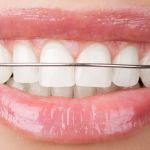- 1. Why You Should Remove Tooth Plaque
- 2. Methods of Tooth Plaque Removal
- 3. Benefits of Regular Plaque Removal
- 4. How to Prevent Plaque Buildup
- 5. Common Issues with Plaque and How to Solve Them
- 6. Tools for Effective Plaque Removal
- 7. When to Visit the Dentist for Plaque Removal
1. Why You Should Remove Tooth Plaque
Tooth plaque is a sticky film of bacteria that forms on your teeth. If not removed regularly, it can harden into tartar, which can lead to cavities, gum disease, and other dental problems. Plaque removal is crucial to maintaining good oral hygiene and preventing more serious issues. The buildup of plaque can also cause bad breath and yellowing of your teeth, which makes plaque removal not only important for health but for aesthetics as well.
2. Methods of Tooth Plaque Removal
There are various methods for removing plaque, from daily at-home care to professional cleaning by a dentist. Brushing your teeth twice a day with fluoride toothpaste is the most basic and effective way to remove plaque. Flossing helps clean between your teeth and remove food particles where toothbrushes cannot reach. Additionally, using mouthwash with antibacterial properties can help reduce plaque buildup. For professional plaque removal, a dentist can perform a deep cleaning using special tools to remove hardened plaque or tartar.
3. Benefits of Regular Plaque Removal
Removing plaque regularly has several benefits, including the prevention of cavities, gum disease, and bad breath. By keeping your teeth and gums clean, you also reduce your risk of developing gingivitis or periodontitis, conditions that can cause inflammation and infection of the gums. Furthermore, regular plaque removal contributes to a brighter, healthier smile, and helps maintain overall oral health, saving you from costly dental procedures down the road.
4. How to Prevent Plaque Buildup
Preventing plaque buildup requires a consistent oral hygiene routine. Brushing your teeth after every meal and flossing daily are the best ways to prevent plaque from forming. Using an electric toothbrush can also enhance plaque removal efficiency. In addition to brushing and flossing, it’s important to avoid sugary foods and drinks, which contribute to plaque formation. Drinking water throughout the day and eating crunchy fruits and vegetables can also help clean your teeth naturally.
5. Common Issues with Plaque and How to Solve Them
Some common issues associated with plaque buildup include swollen gums, bleeding gums, and bad breath. These problems may be the first signs that plaque is affecting your oral health. If you notice these symptoms, it’s important to take action by improving your brushing and flossing habits. In more severe cases, professional plaque removal may be necessary. If left untreated, plaque buildup can progress to gum disease or tooth decay, both of which require professional intervention.
6. Tools for Effective Plaque Removal
Several tools can aid in plaque removal, both for daily use and for more intense cleaning. A good toothbrush with soft bristles and a fluoride toothpaste should be your first line of defense. Electric toothbrushes are particularly effective at removing plaque due to their rapid brushing motion. Interdental brushes and dental floss are ideal for cleaning between teeth. Additionally, using a water flosser or mouthwash can help reduce plaque buildup between cleanings. For professional plaque removal, your dentist may use ultrasonic devices and scaling instruments to remove hard plaque and tartar from your teeth.
7. When to Visit the Dentist for Plaque Removal
While regular home care can remove plaque, it’s still important to visit your dentist every six months for a professional cleaning. Dentists have specialized tools to remove tartar that cannot be cleaned away with brushing alone. Regular dental check-ups allow your dentist to monitor your oral health and catch any plaque-related issues early. If you notice excessive plaque buildup, swollen or bleeding gums, or persistent bad breath, it’s essential to schedule an appointment with your dentist as soon as possible.
Incorporating regular plaque removal into your daily routine is the best way to maintain healthy teeth and gums. If you want to take better care of your oral health, be sure to visit Dentistry Toothtruth for products and tips on effective plaque removal.







 Ridge Periodontics & Dental Implants3.0 (12 review)
Ridge Periodontics & Dental Implants3.0 (12 review) Ernstberger Orthodontics5.0 (326 review)
Ernstberger Orthodontics5.0 (326 review) Tenafly Dental Associates5.0 (837 review)
Tenafly Dental Associates5.0 (837 review) Bluff Creek Dental4.0 (221 review)
Bluff Creek Dental4.0 (221 review) Dr. Edward Perdue Pediatric Dentistry4.0 (410 review)
Dr. Edward Perdue Pediatric Dentistry4.0 (410 review) Smile For All Family Dental0.0 (0 review)
Smile For All Family Dental0.0 (0 review) The Importance of Oral Health Education During Pregnancy for a Healthy Pregnancy
The Importance of Oral Health Education During Pregnancy for a Healthy Pregnancy Best Tips for Brushing Your Teeth Properly for Healthy Gums: Essential Techniques for Oral Health
Best Tips for Brushing Your Teeth Properly for Healthy Gums: Essential Techniques for Oral Health Why Skipping Dental Checkups Can Lead to Bigger Oral Health Problems
Why Skipping Dental Checkups Can Lead to Bigger Oral Health Problems Advantages of Porcelain Dental Restorations
Advantages of Porcelain Dental Restorations How Can Diabetes Cause Tooth and Gum Problems? Preventing and Managing Oral Health Issues
How Can Diabetes Cause Tooth and Gum Problems? Preventing and Managing Oral Health Issues Healthy Habits for Promoting Good Oral Health and Hygiene: Tips for a Healthy Smile
Healthy Habits for Promoting Good Oral Health and Hygiene: Tips for a Healthy Smile